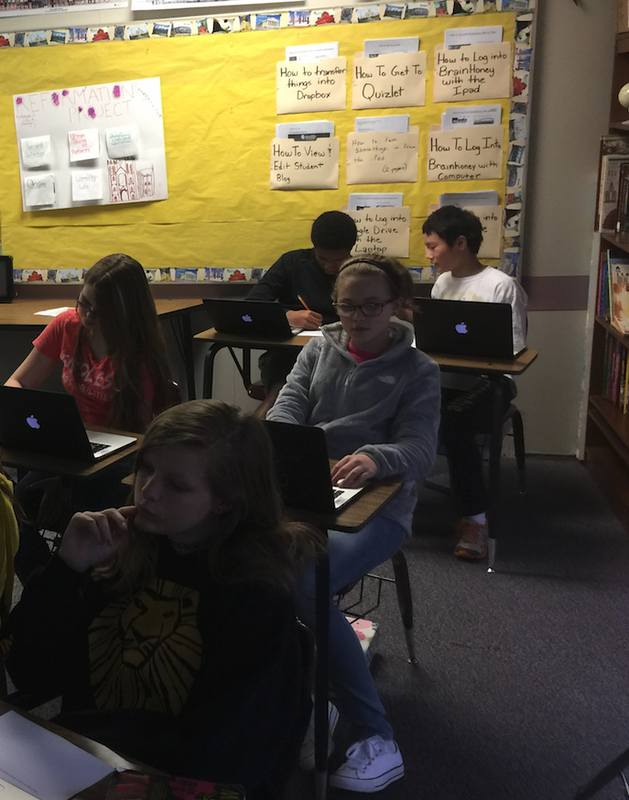While we were finishing up the Middle Ages we began to talk about our next unit the “Renaissance”. We knew that we wanted to do it differently from the Middle Ages but we struggled coming up with the structure for it. We struggled with the same questions that all teachers struggle with: How much information should we give to the students? How much freedom do we give the students? Do we do flipped lessons? Do we have more full class discussions? Should we put in more “traditional or structured” lessons into the unit? Well with all of those questions being thrown around like we were standing in the middle of an educational tornado we came up with the outline below. We are not naive enough to think we have it all figured out but thought once Garth gets through this lesson (he is a few weeks ahead of me due to the difference in our schedules) can get student feedback to help us improve the remaining units.
|
For the past few months Garth, Mike and I have had a lot of conversations about our teaching practices. The conversations started up following the completion of our Middle Ages unit where students are truly able to explore their own learning. During this unit there is very little focus emphasis placed on due dates and making sure that the students know each specific detail. Rather we make sure that the students know certain information then give them the time and freedom to explore more specific details on what interests them.
While we were finishing up the Middle Ages we began to talk about our next unit the “Renaissance”. We knew that we wanted to do it differently from the Middle Ages but we struggled coming up with the structure for it. We struggled with the same questions that all teachers struggle with: How much information should we give to the students? How much freedom do we give the students? Do we do flipped lessons? Do we have more full class discussions? Should we put in more “traditional or structured” lessons into the unit? Well with all of those questions being thrown around like we were standing in the middle of an educational tornado we came up with the outline below. We are not naive enough to think we have it all figured out but thought once Garth gets through this lesson (he is a few weeks ahead of me due to the difference in our schedules) can get student feedback to help us improve the remaining units.
Once Garth was done with this unit he surveyed his students asking for their feedback on both the Middle Ages and Renaissance units. While we reviewed that feedback one thing that students mentioned was they wanted to have more group discussions. You see during these units most of the discussions come from Garth and myself walking around the room having one on one conversations with as many as the students as we possibly can. But a significant portion of students wanted to have more than the one on one conversations. So we made a change to the next unit by putting a step in where students need to have a conference with the teacher. Note this change is not shown in the unit outline above it will be included in the second part. Once students complete the step before the conference step they write their name on the board. After there are anywhere from 3-10 names on the board the teacher will call those students over to have a discussion about what they have learned so far. Once the discussion is complete they move back to the self paced directions and continue on.
After completing this unit we realized a few more things still need to be modified. But for the sake of not writing a novel on a single post I will stop this one here. Look for the second part of this post in the near future. All comments are welcomed and encouraged!
1 Comment
9/6/2015 09:55:48 am
Thanks for sharing your info. Once again, I truly appreciate your efforts and I am waiting for your further post thanks.
Reply
Leave a Reply. |
Archives
July 2023
|


 RSS Feed
RSS Feed


